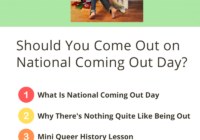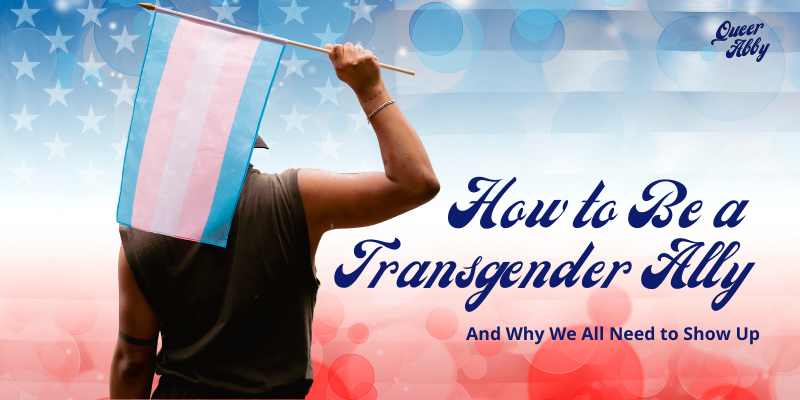
Dear Queer Abby,
Someone I supervise recently revealed he is trans and will be transitioning. I am so very excited for him (hasn’t changed pronouns yet). Anyways, I want to be the best ally possible, and I was thinking I need to do some reading. I’d love to better understand the obstacles he will ultimately undergo. Any recommendation for a good biography on someone who has transitioned or a good blog post? Thanks for any help you can send my way. It’s my first time experiencing this with anyone close to me and I want to be the best support and ally I can be.
Sincerely,
Anne C.
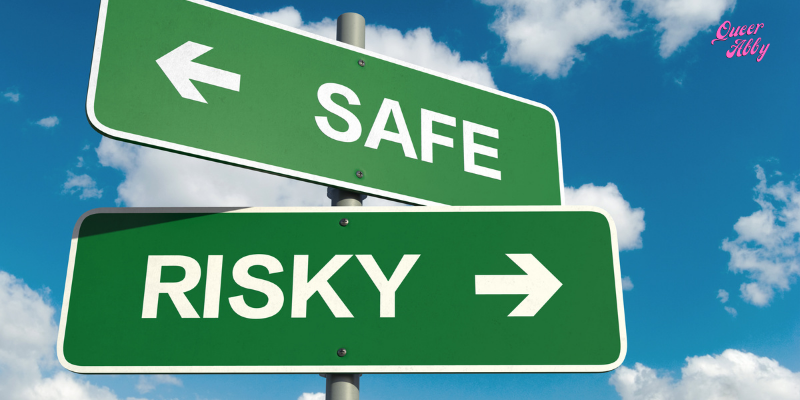
How to Be a Transgender Ally in 2022 (and Why We All Need to Show Up)
Dear Anne,
How grateful I am for people like you in this world. Allyship is so important, particularly for minority groups like our transgender community. Many people (myself included) confuse allyship with advocacy and feeling the need to be outspoken on an issue. The truth is, not everyone is cut out to be an advocate. We can all be allies though.
Allyship in the simplest term means creating a connection. An ally doesn’t have to necessarily understand someone in order to see them for who they are and where they’re at. Allyship is the extended hand of peace that says, “you are safe with me.” And right now the trans community needs those supportive arms outstretched more than ever.
Let’s Understand Some Basics About the Transgender Community
Transgender people are acknowledged by the World Health Organization, American Psychology Association, and American Medical Association; all of which assert that being transgender is not a mental illness, nor does it have to do with fulfilling a gender fantasy. These organizations have asserted that being transgender is not a “dysfunction,” but also recognize that the social stigma and barriers around gender expression can create adverse health conditions.
When it comes to transgender youth and adolescence, the American Academy of Pediatrics supports gender affirming care for transgender youth as outlined in their 2018 policy statement Ensuring Comprehensive Care and Support for Transgender and Gender-Diverse Children and Adolescents , which defined gender affirmation as “developmentally appropriate, nonjudgmental, supportive care provided in a safe clinical space.” For heaps more info on what gender affirming care means, read here. (Hint: it’s not performing bottom surgery and giving testosterone shots to 8-year-olds).
Transgender people have existed throughout history and across continents, and have not always been negatively portrayed as they are in present day US of A. In fact, here’s a cool map from PBS that explains gender identity across cultures A Map of Gender-Diverse Cultures | Independent Lens | PBS.

Great, But What Does ‘Transgender’ Even Mean?
A transgender person is one who has a gender identity or a gender expression that is different than the sex they were assigned at birth (which is usually based solely on the appearance of external genitalia… and how we fail our intersex community). Where this most typically presents as male to female (mtf) or female to male (ftm), there are people who are part of the genderqueer, gender non-conforming, agender, or non-binary community who also identify as trans. Trans=transition.
Transgender is the T in the acronym LGBTQ+. What some people don’t realize about the LGBTQ+ community is that some members of the community are there because of their sexual attraction (gay, lesbian, bisexual, queer, asexual), some members are there because of their gender identity (transgender, intersex, agender, queer), and some members are there because they fit into both categories. For example, a transgender man may also be sexually attracted to men and thus could also identify as gay.
If your head is spinning from all of this alphabet soup, it’s okay. The point is that people now have more ways than ever to see themselves in the LGBTQ+ community and may choose to label themselves (or not) based on what feels most appropriate to them.
Why We All Need to Be Transgender Allies
For the amount that “transgender” has been in the media and on legislative floors, many would be surprised to learn that transgender people currently make up less than 1% of the population. As of March 2022, there were already 240 anti-LGBTQ bills filed in the US and more than half of them specifically targeted transgender people. (For comparison, there were only 41 anti LGBTQ bills filed during the entirety of 2018). And even though 8 out of 10 Americans support laws that protect the LGBTQ+, the transgender population is still facing strong legal opposition when it comes to receiving care, using the bathroom, or participating in sports at any age or level.
Why are people scared of our transgender population? Misinformation, like this 2017 article from ChristianPost.com titled “Transgender Bathroom Policies Have Led to 21 Attacks on Women.” I read it to get a better understanding of the risks of allowing transgender people to use the restrooms that matched their identity. Digging a little deeper, I learned that this guy is the only named perpetrator in the article… and he is not transgender and does not identify as such. It made me realize how much we still don’t know (or refuse to learn) about what being transgender means when we cannot separate the concepts of “male sexual predator” from “transgender woman”. I also learned that if you're truly concerned about bathroom attacks, it’s usually the transgender people who are the ones being attacked.
So, how persecuted is this minority group in the United States? Enough so that the Human Rights Watch released a 65-page report in 2021 titled, “’I Just Try to Make It Home Safe’: Violence and Human Rights of the Transgender People in the United States.” As of November, 2021 marked the deadliest year for anti-transgender violence, with the majority perpetrated against black transgender women. Transgender youth are at significantly higher risks for suicide, depression, violence, and homelessness than their cis-gender peers.
While we like to pretend that the persecution and murder of minority groups only happens in other countries, it is happening in our neighborhoods and many of us aren’t even aware. Let’s change that, shall we?
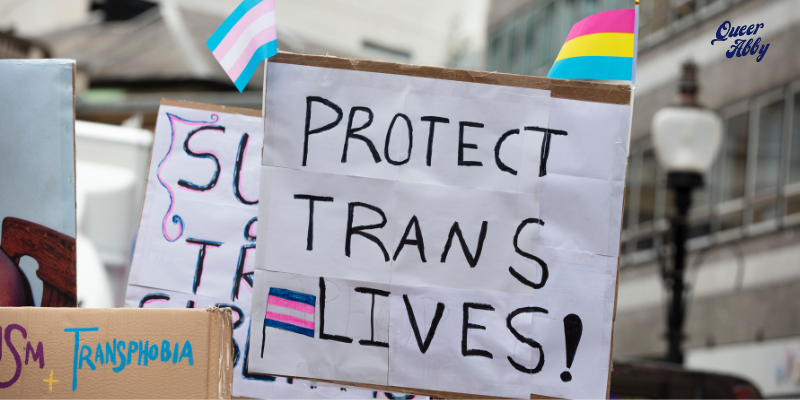
Transgender Allyship 101
Thanks for sticking with me. Let’s dive into the most important piece of this post—how to become a better ally to the transgender community:
- Become a safe space- Figure out how you can let others know you’re a safe space for the trans or LGBTQ+ community. Perhaps it’s through a sticker on your name tag, a pin, a small sign at your desk, or a frame on your social media profile identifying yourself as an ally. You don’t need to have all the answers. Just being there and listening can do so much good. Also, if this feels scary to do (because someone may assume YOU are queer or trans), congratulations--- you also just earned yourself a dose of empathy for the fear that the LGBTQ+ feel each time they have to reveal their status.
- Create a safe space- Look at your workplace and social spaces with new eyes. Is your paperwork and communications inclusive of more than just the gender binary? Do people know that your office or restaurant or worship center or team are welcoming to everyone? This is particularly important for medical establishments where the LGBTQ+ population may feel that much more vulnerable.
- Learn- The Netflix documentary Disclosure is both eye-opening and heartbreaking. Janet Mock’s memoir Redefining Realness: My Path to Womanhood, Identity, Love, and So Much More is also an excellent look into what it’s like to grow up trans and the many issues transgender women of color face. For young adults (but really all adults), The Passing Playbook by Isaac Fitzsimons is a beautiful piece of fiction that discusses the very real issues that trans adolescents face.
- Donate to organizations who support trans rights and services. The Trevor Project is an excellent place to start, however I’d also encourage you to search for local grassroots organizations in your area. You may be able to provide more direct care to your neighbors in need.
- Vote and contact your local and state representatives accordingly. Okay... fine. This is more along the lines of advocacy. But, if we want our government to more accurately reflect the beliefs of the people, then we need to start speaking up. Many people support gay and trans protection, but far fewer take a few minutes to send an email or make a phone call and voice their stance. Homophobia and transphobia thrive in silence. Allyship from straight and cis-gender people is necessary to protect the minority.
- If you make a mistake, acknowledge it and move on. The speed at which terminology is changing in our society (particularly around gender identity) is hard to keep up with. Be flexible and listen to what trans people are asking for. If you mess up a pronoun or say something that is not a-okay, apologize and then move on. Don’t make a big deal of it and don’t dwell on it. Just learn from it.
- Help spread the word about the Trans LifeLine when appropriate. It's the first transgender suicide hotline in the U.S. and can be reached at 877-565-8860.
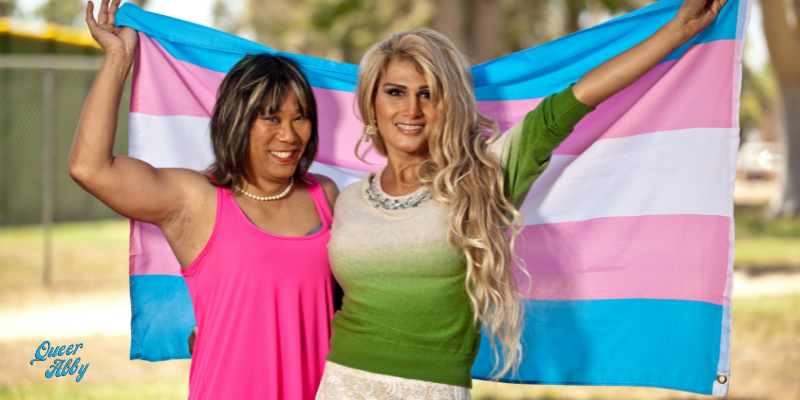
A Word from our Transgender Community
I was shocked to learn in the documentary, Disclosure , that 80% of Americans do not actually personally know a transgender person. I am grateful to the transgender people who I have been able to connect with through TikTok to educate me and share their lived experiences with us here. I posed your question, Anne, and here are their responses:
“Polite, friendly, kind is great. But above all, don’t be so anxious about it that you stop interacting with them. We need friends who are present with us.”
“Be a friend… not the “Oh, hi friend,” but the one capable of keeping the exact same relationship as before. We lose most friends and family over this.”
“My advice is not to assume. People tend to assume one’s gender or sexual orientation by how they look or who they’re married to. #nonbinary”
“Use their pronouns and correct name… and don’t ask invasive questions.”
“Just be the same friend.”
“What I wish others did when I went through this was for people to simply be there. Don’t force it. There will be a lot going on inside this woman. If you were my friend before, it definitely helps to have a check in.”
“Hold space for them and get their pronouns right. Sometimes the most validating thing in the world is just to be seen as the woman you are.”
“I came out to my friends because I could trust them. I felt alone and I needed to talk. I am cool with allyship, but I need friends and to talk.”
“To listen to what she tells you is important for her. To support her and show up for her. Help with a connection.”
Noticing a trend? They need real friends. And their transition doesn’t need to be a big deal to anyone else but them. Simple kindness and respect go a long way.
Final Thoughts
I saw a comment on TikTok once that really stuck with me, and so I wanted to share it here to see if you’d feel a similar reaction. It came from a woman who posted that, “I am a woman who has just gone through the transgender experience.”
Perhaps it hit me because so often we try to frame transgender people as a “this-to-that” rather than giving them the due credit and respect that they have been that person the entire time. She has always been a woman, but as a result of how her body formed and how society viewed her, she has gone through the transgender experience.
I know I mentioned above that “trans” implies transition. And yet associating a trans person with the gender that was assigned to them is part of the challenge when it comes to acknowledging them completely in their present gender identity.
The moral of the story is that there is always more we can learn and more ways that things will change. Showing up with love and listening to people when they tell their story is the best way to extend the hand of allyship.
Anne, thank you for showing up and prompting this oh-so-necessary conversation.
With love,
Queer Abby


